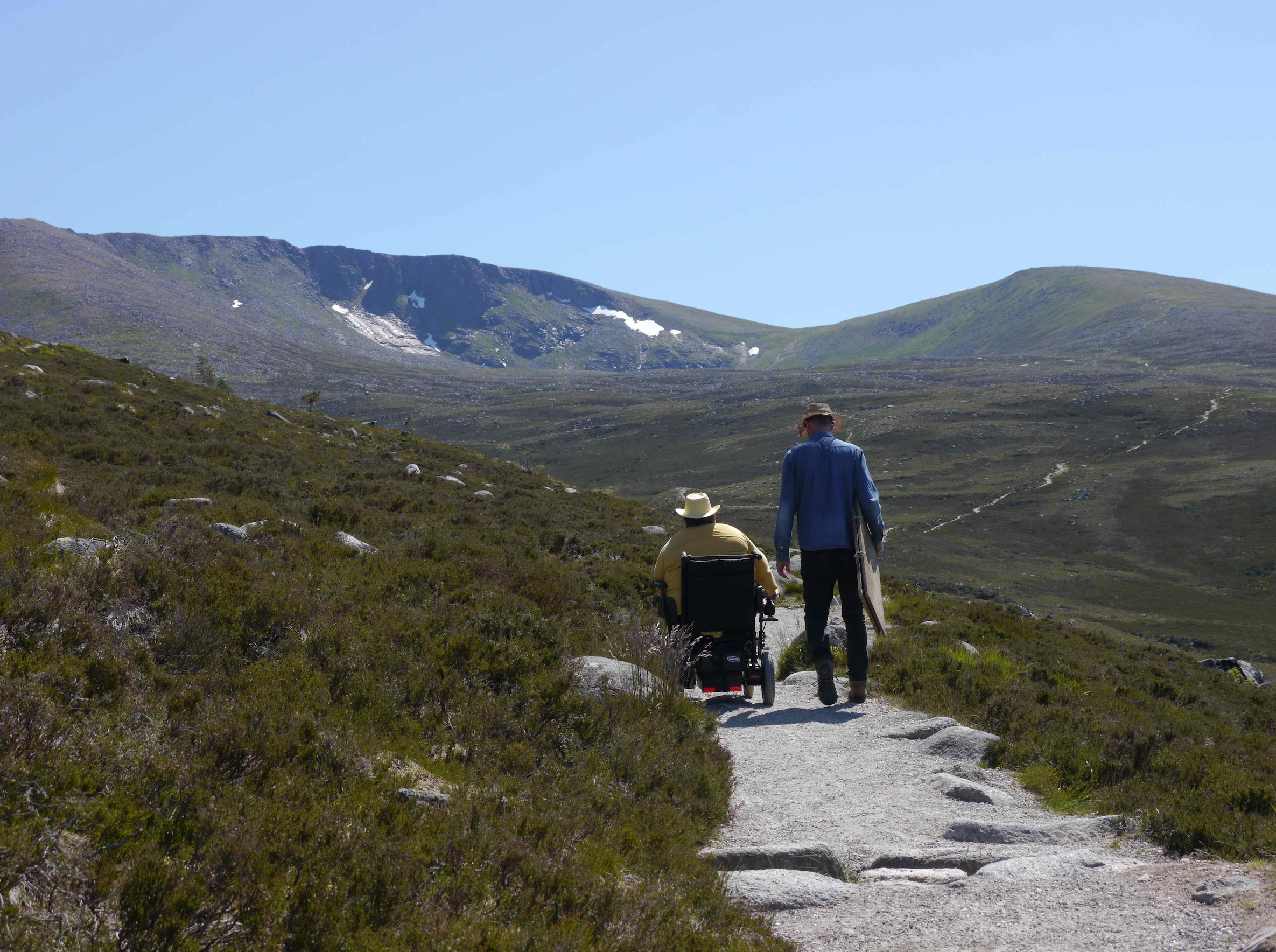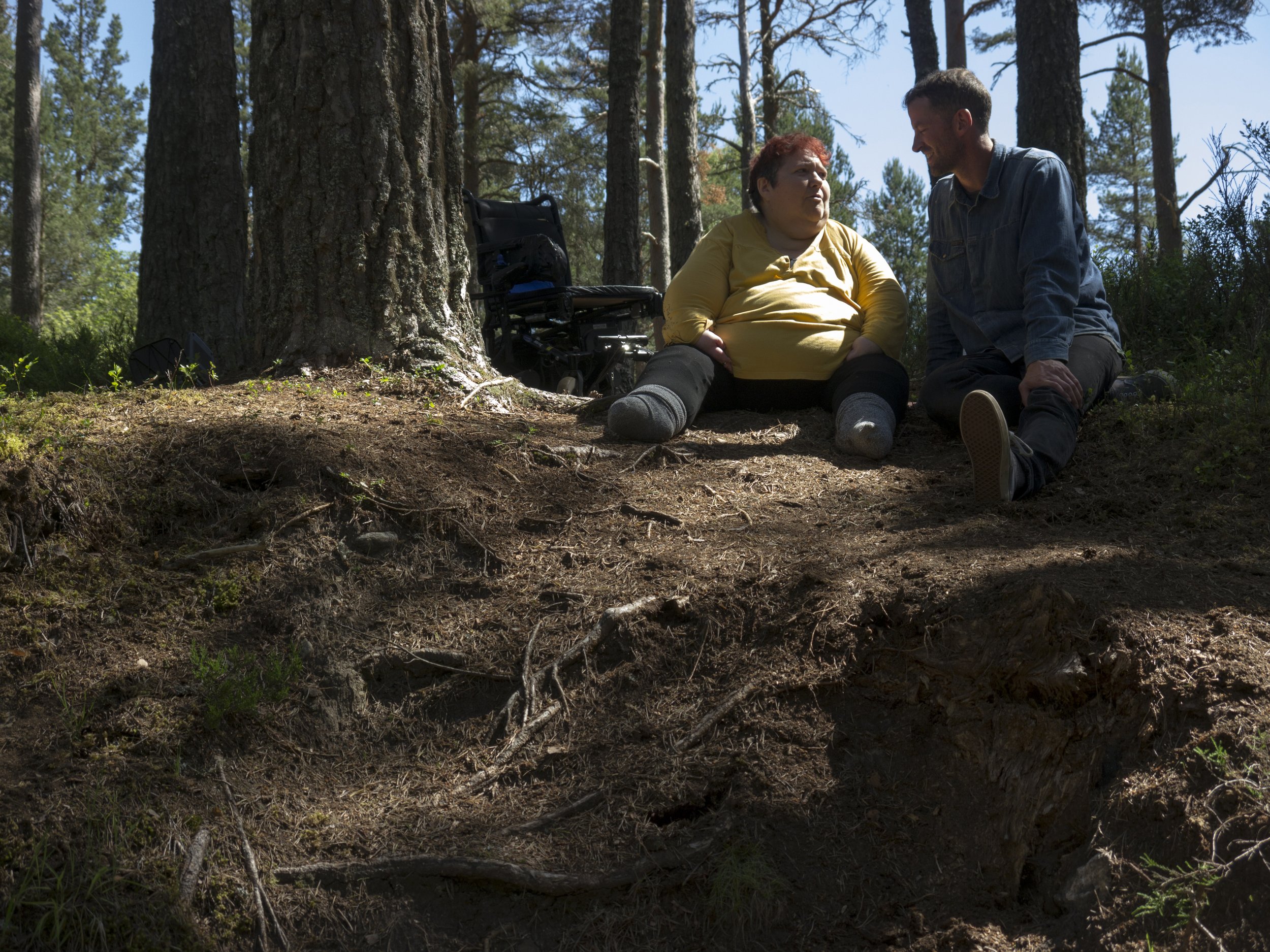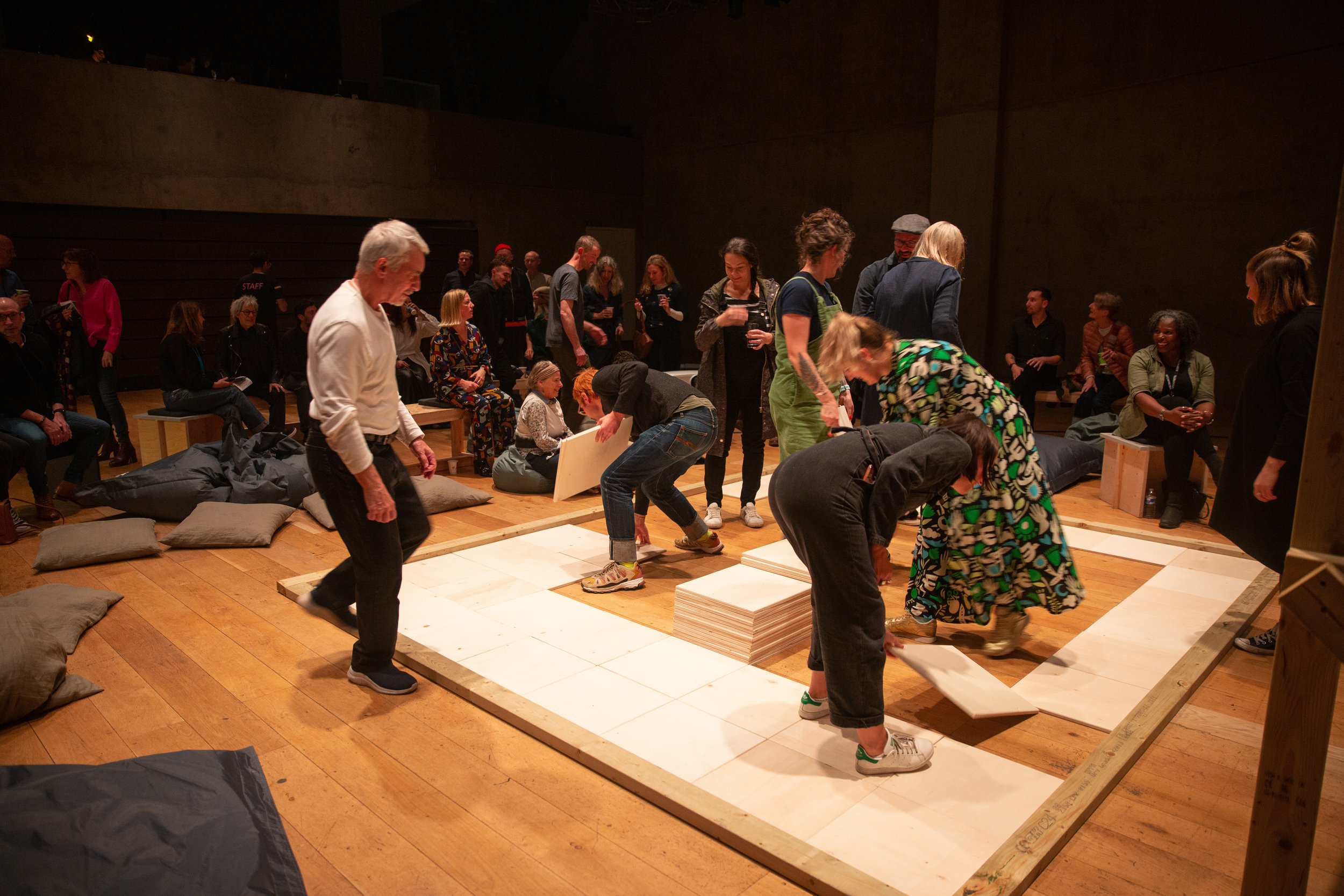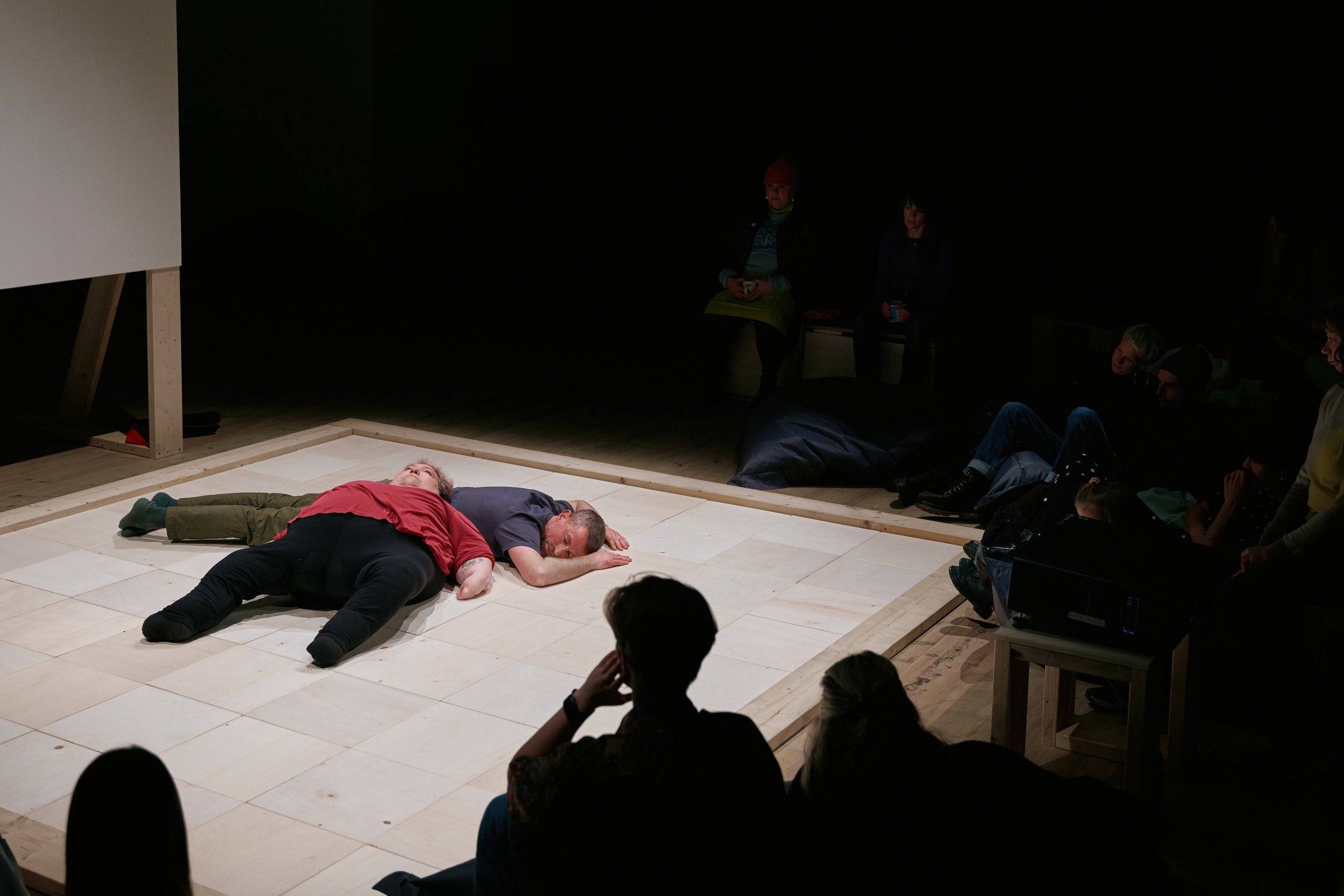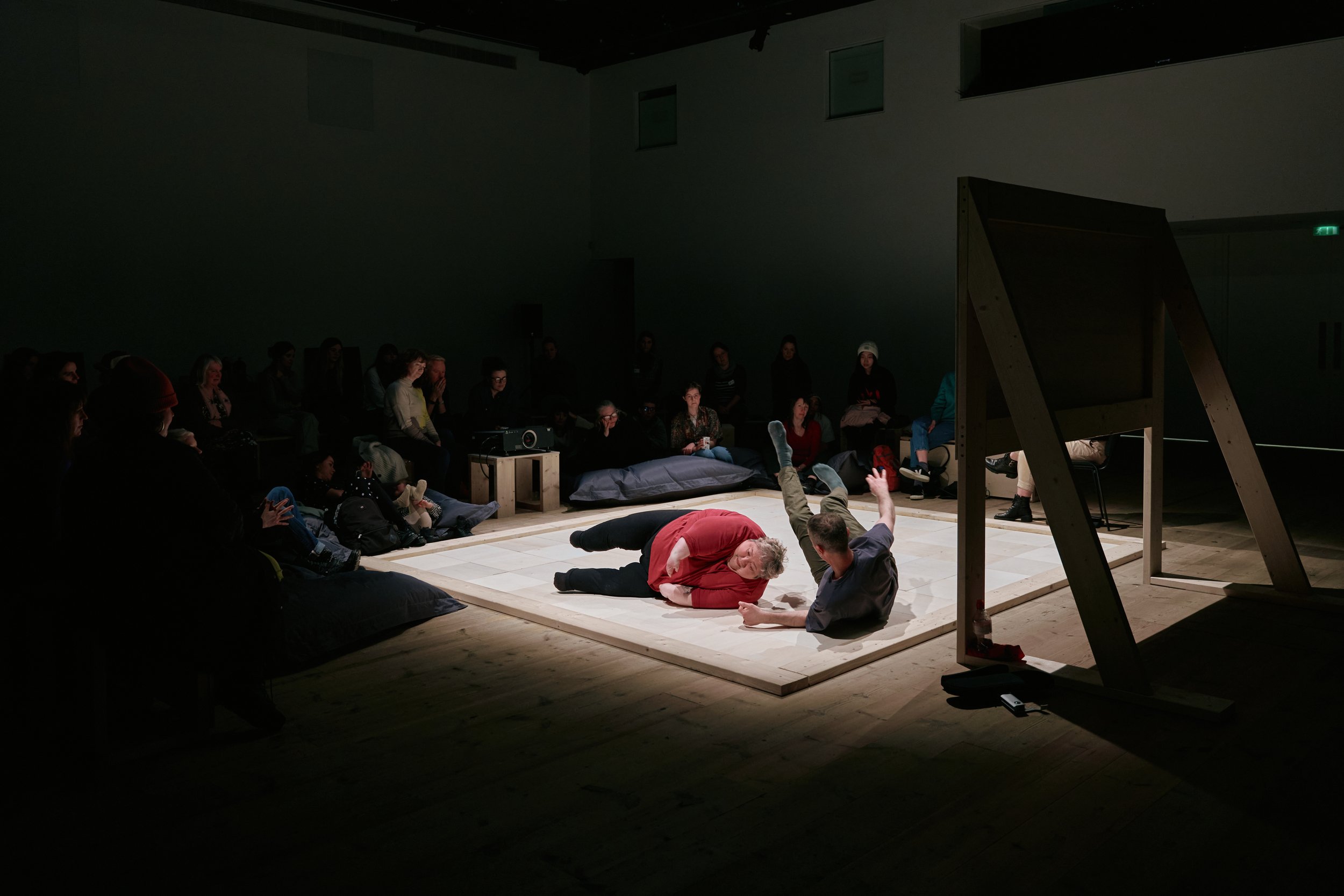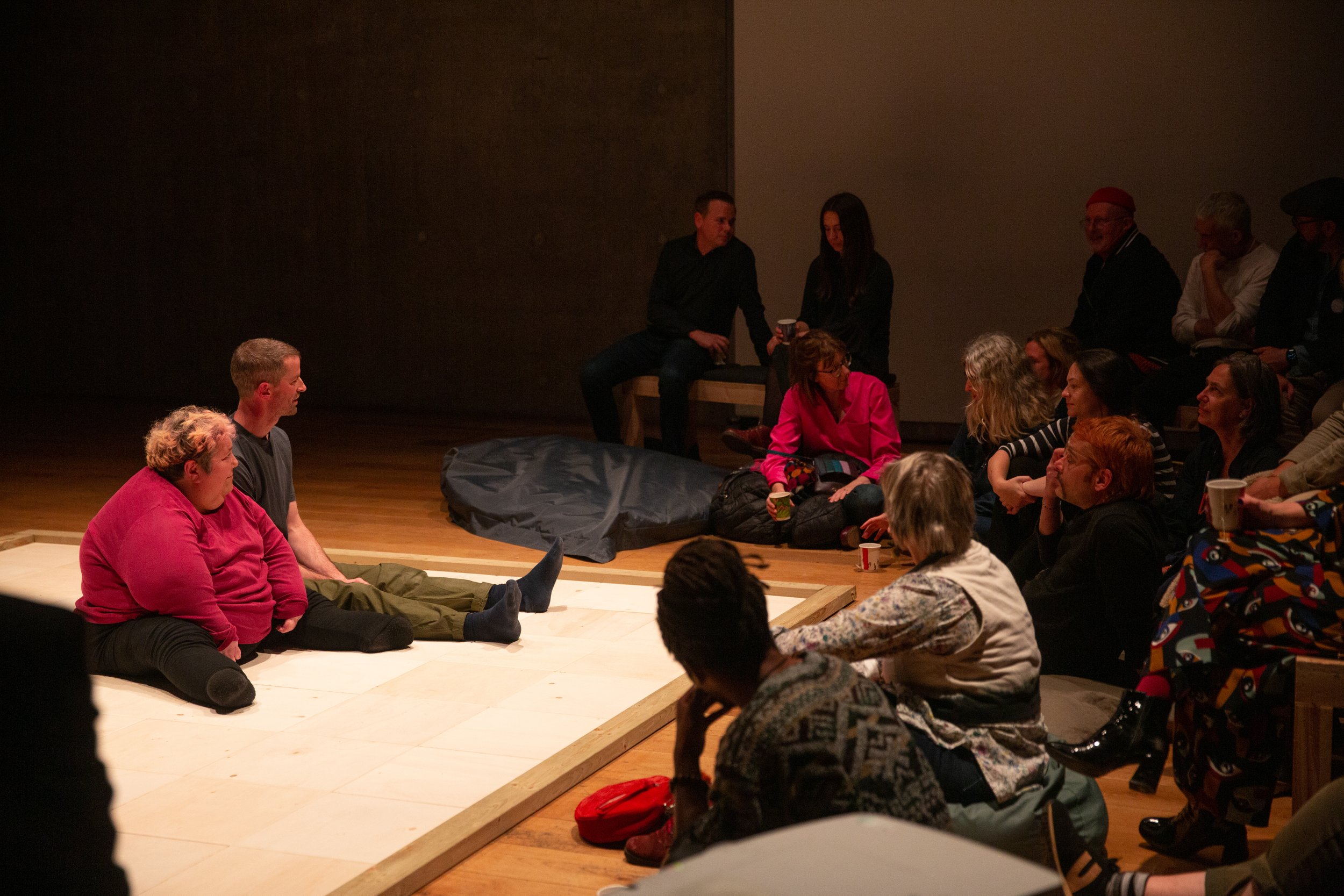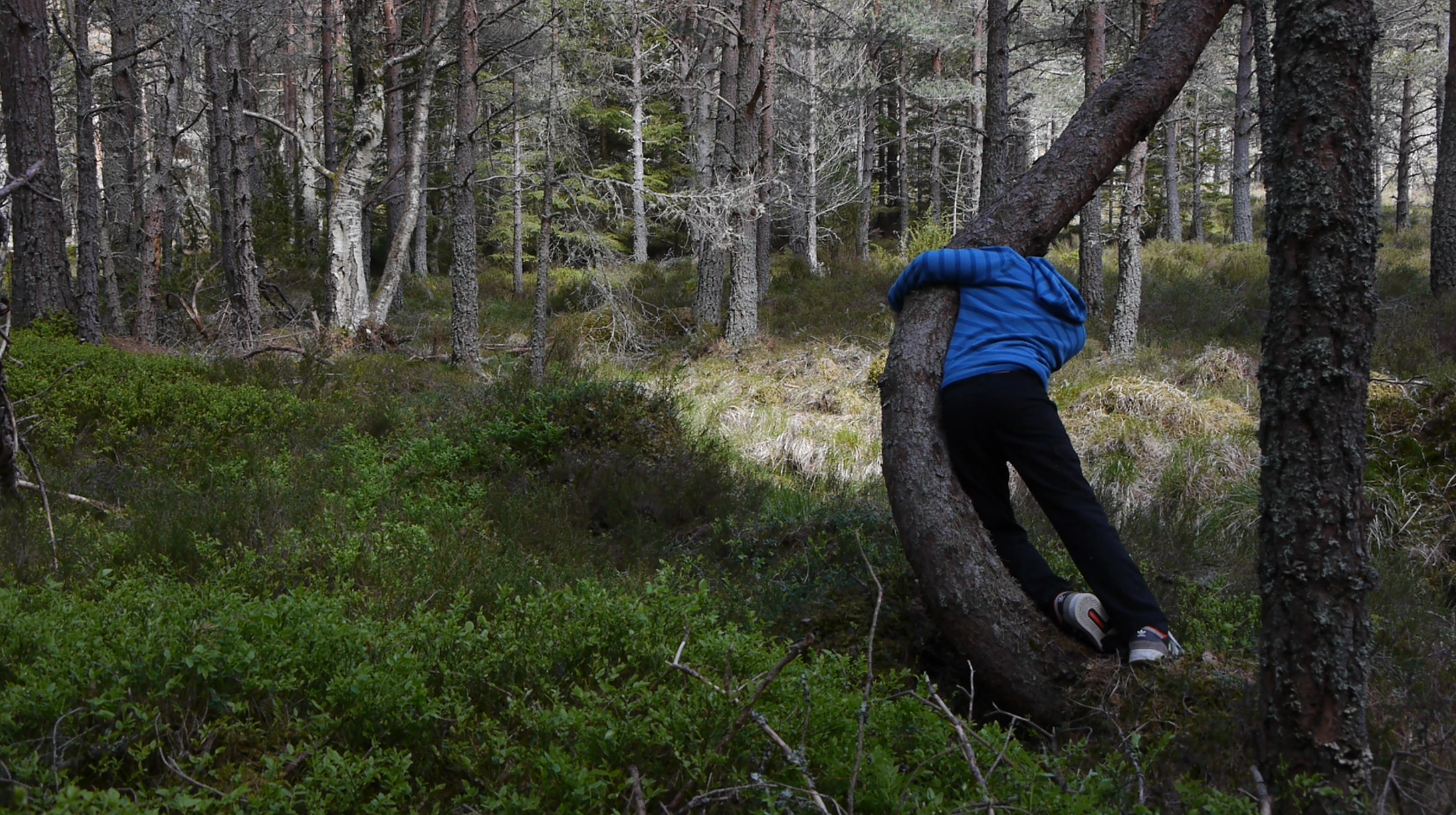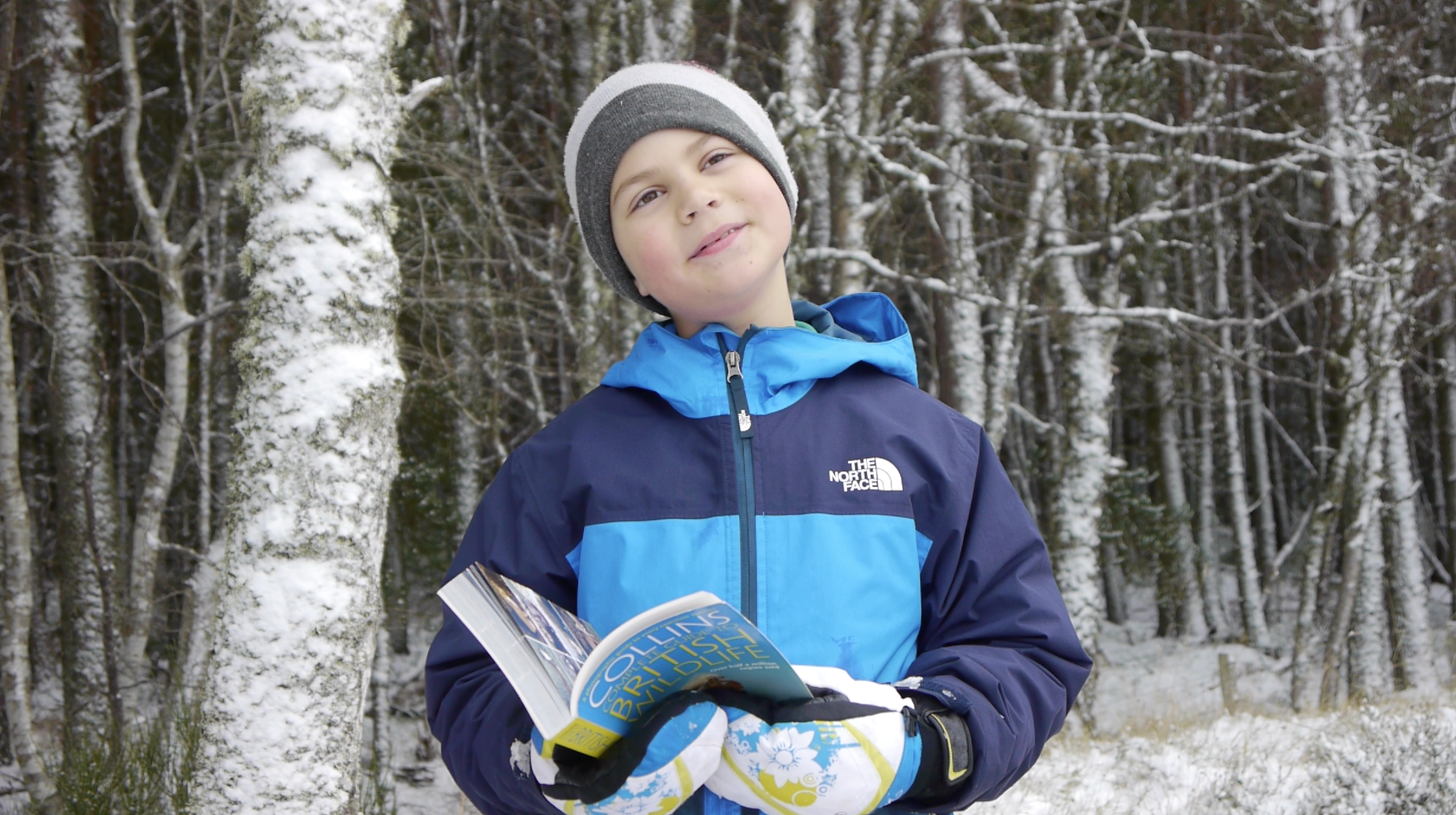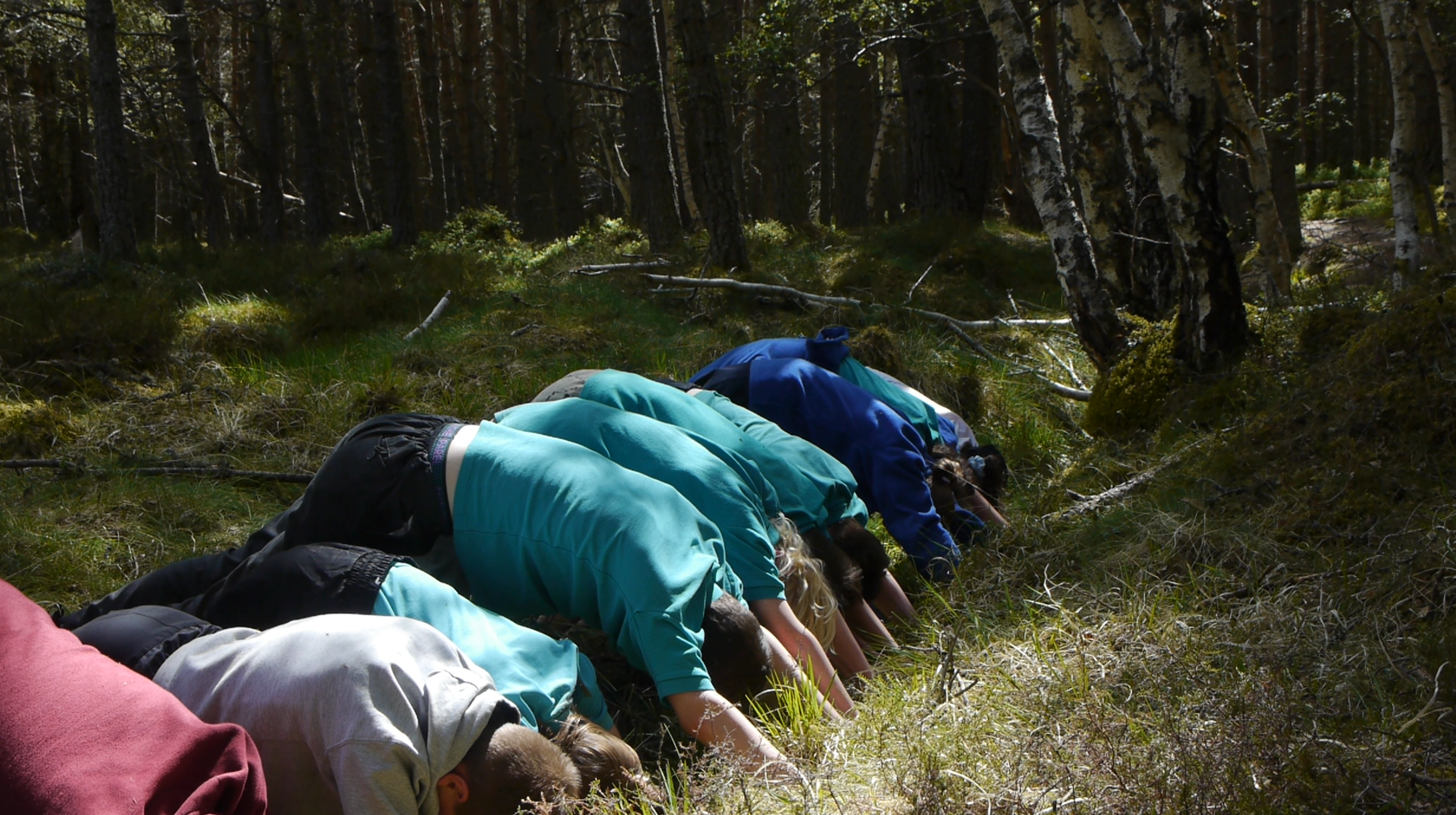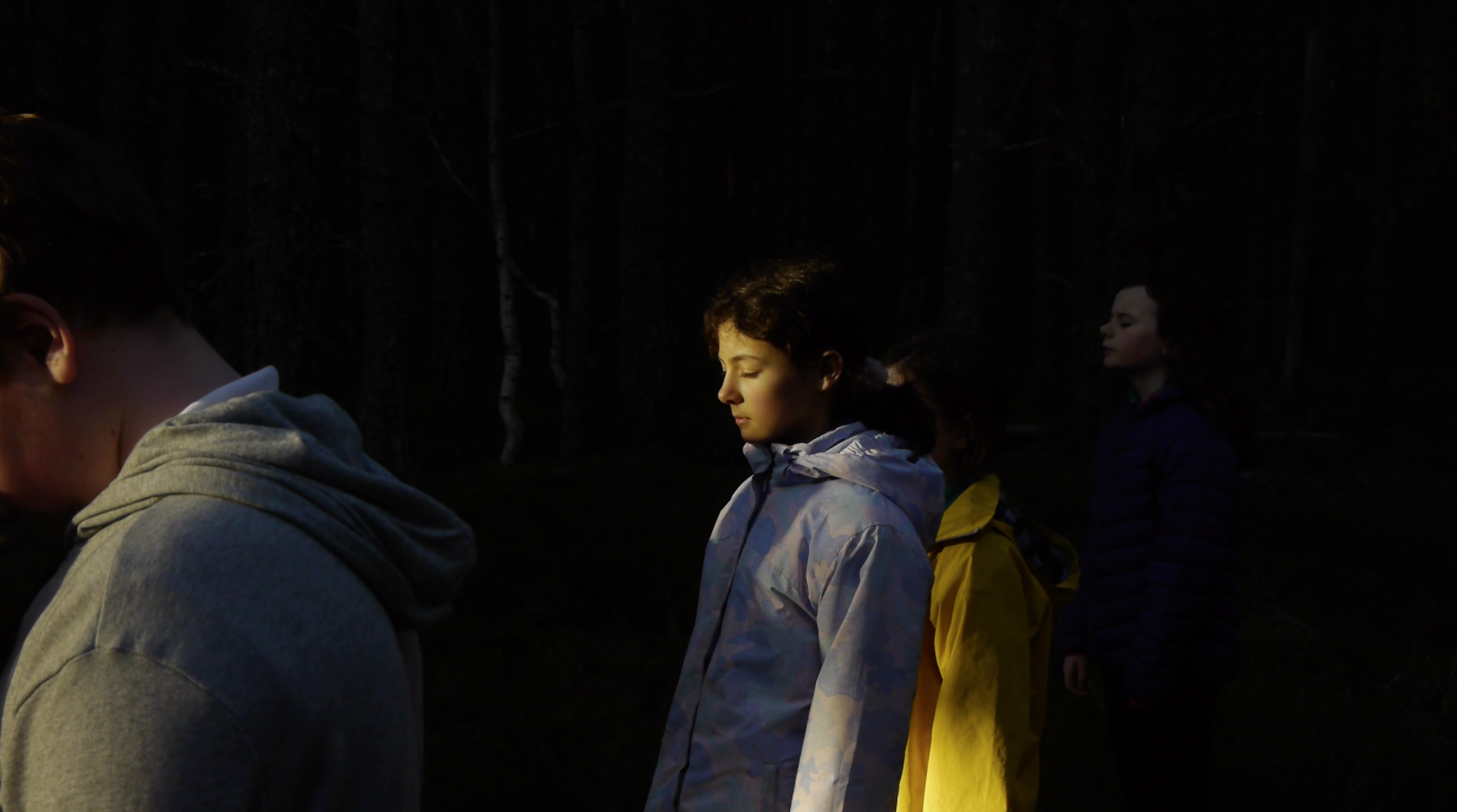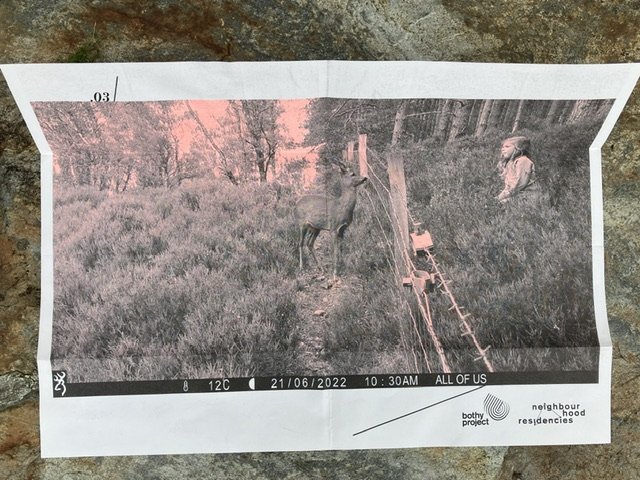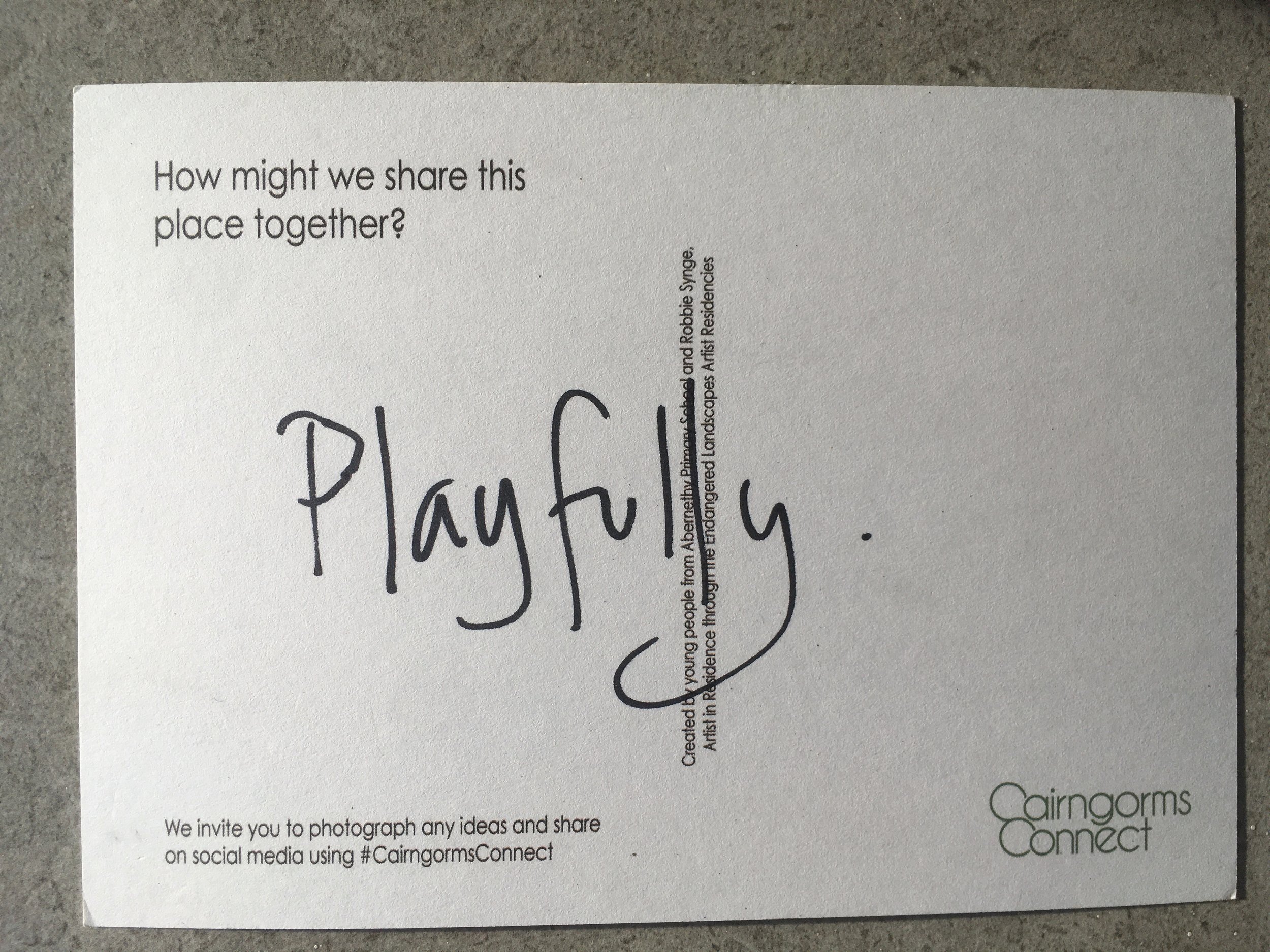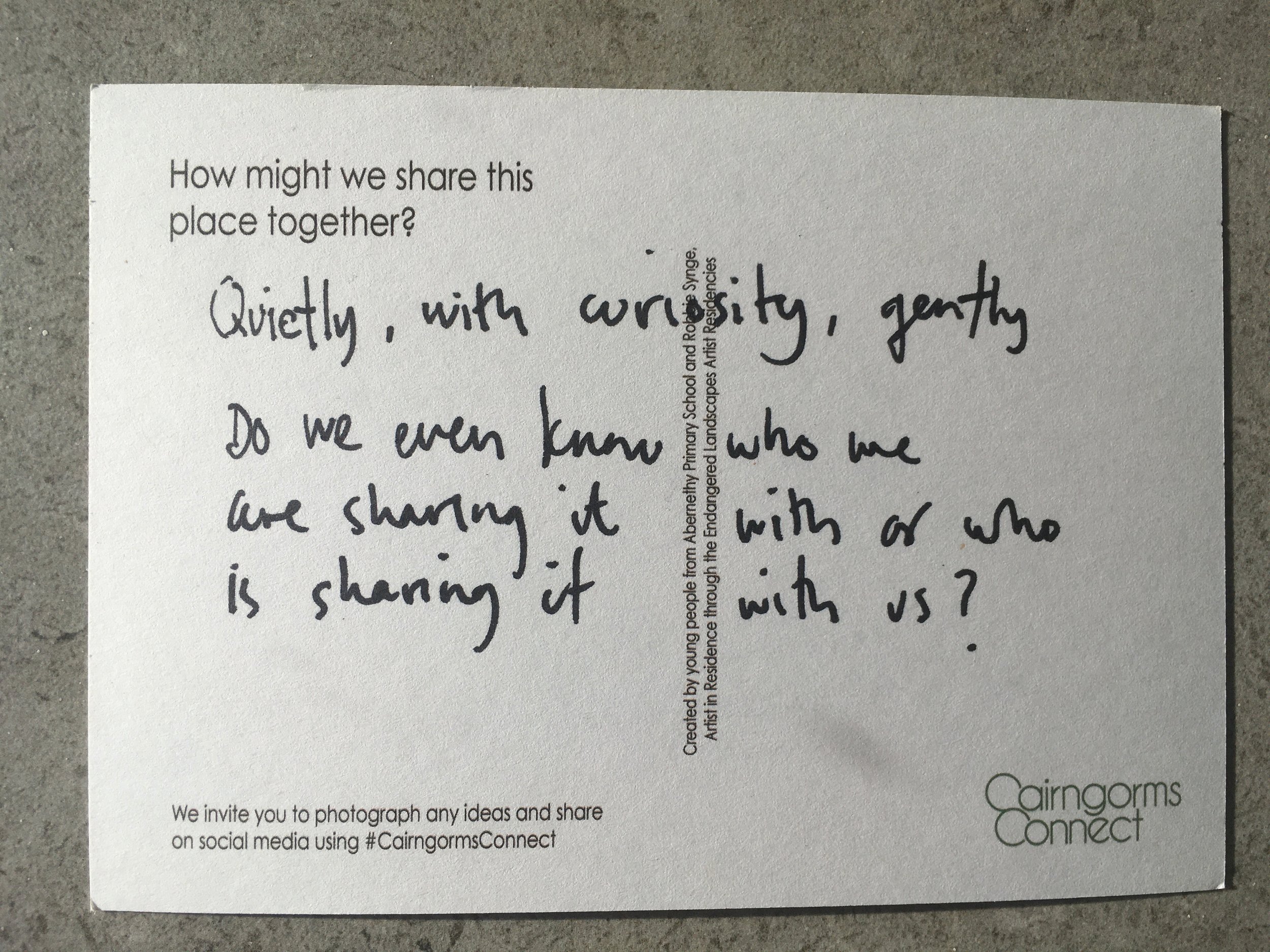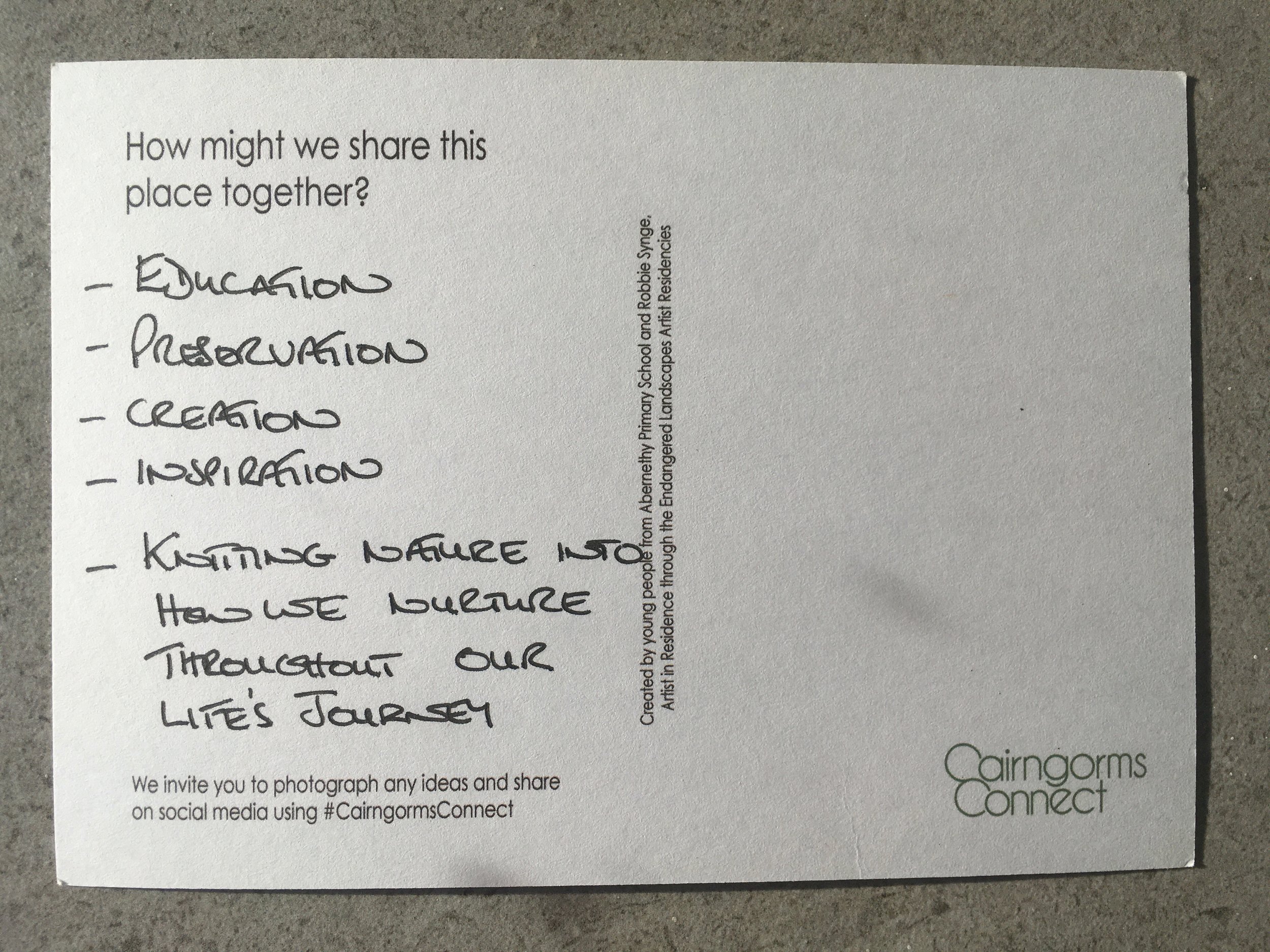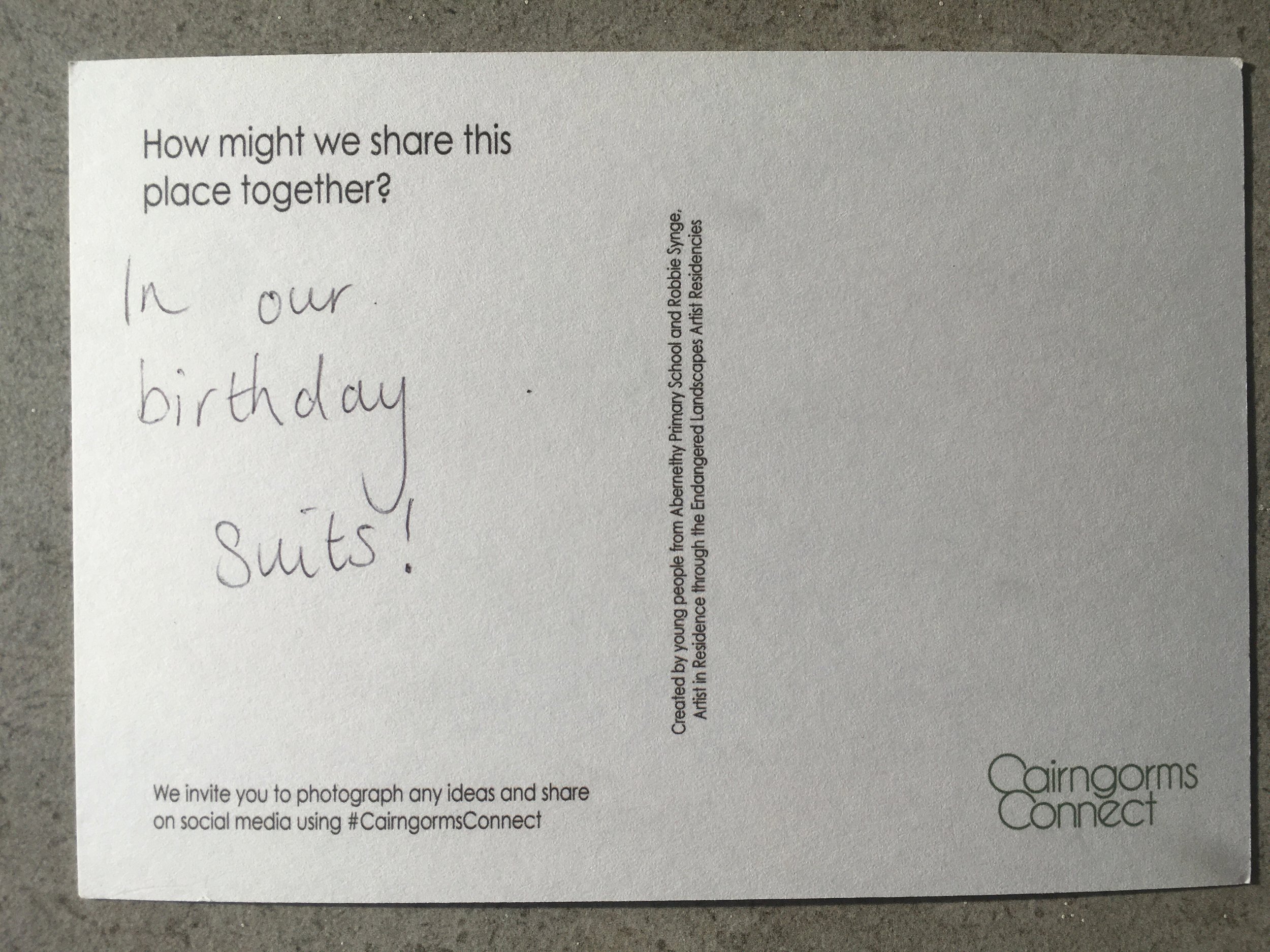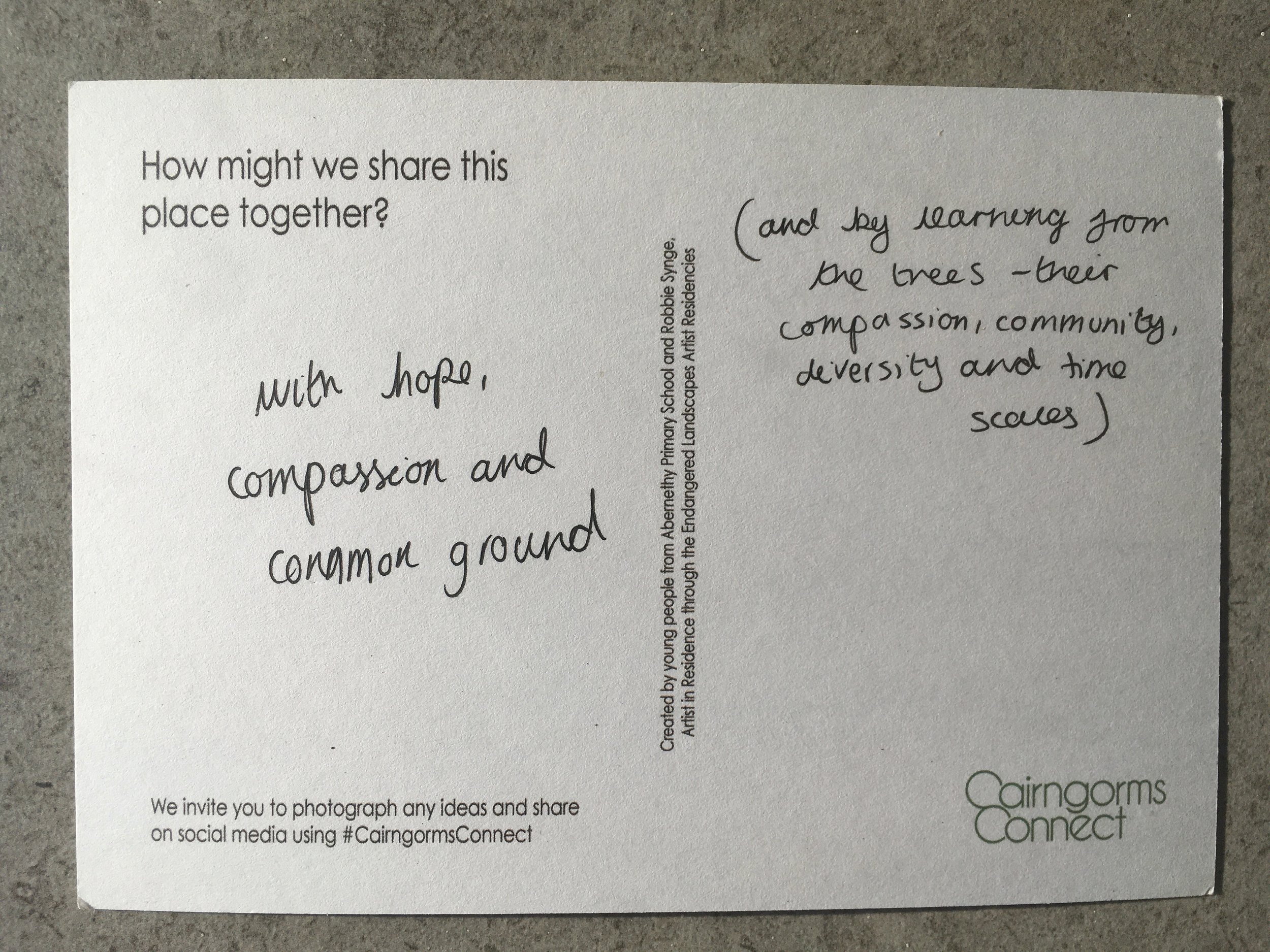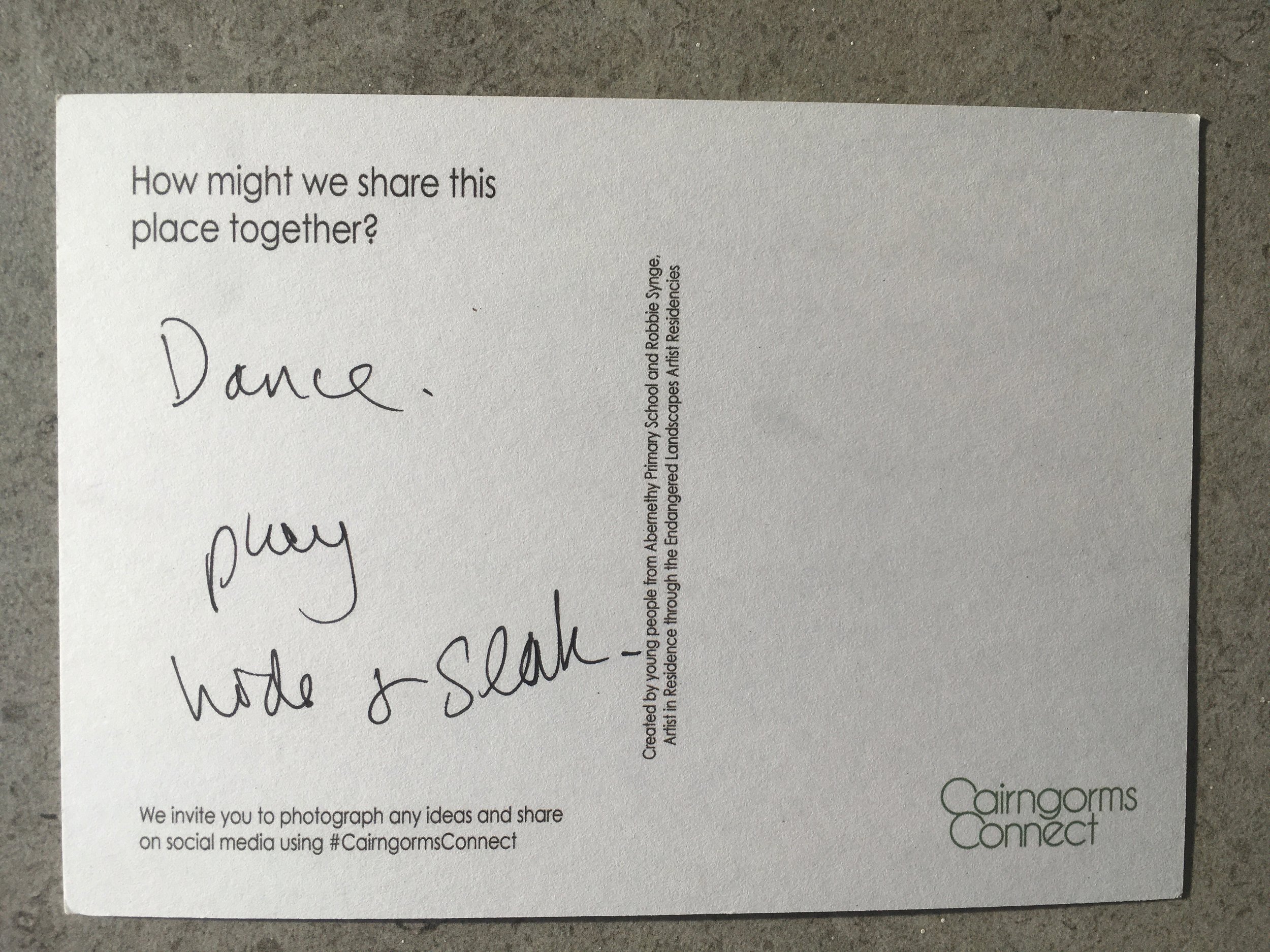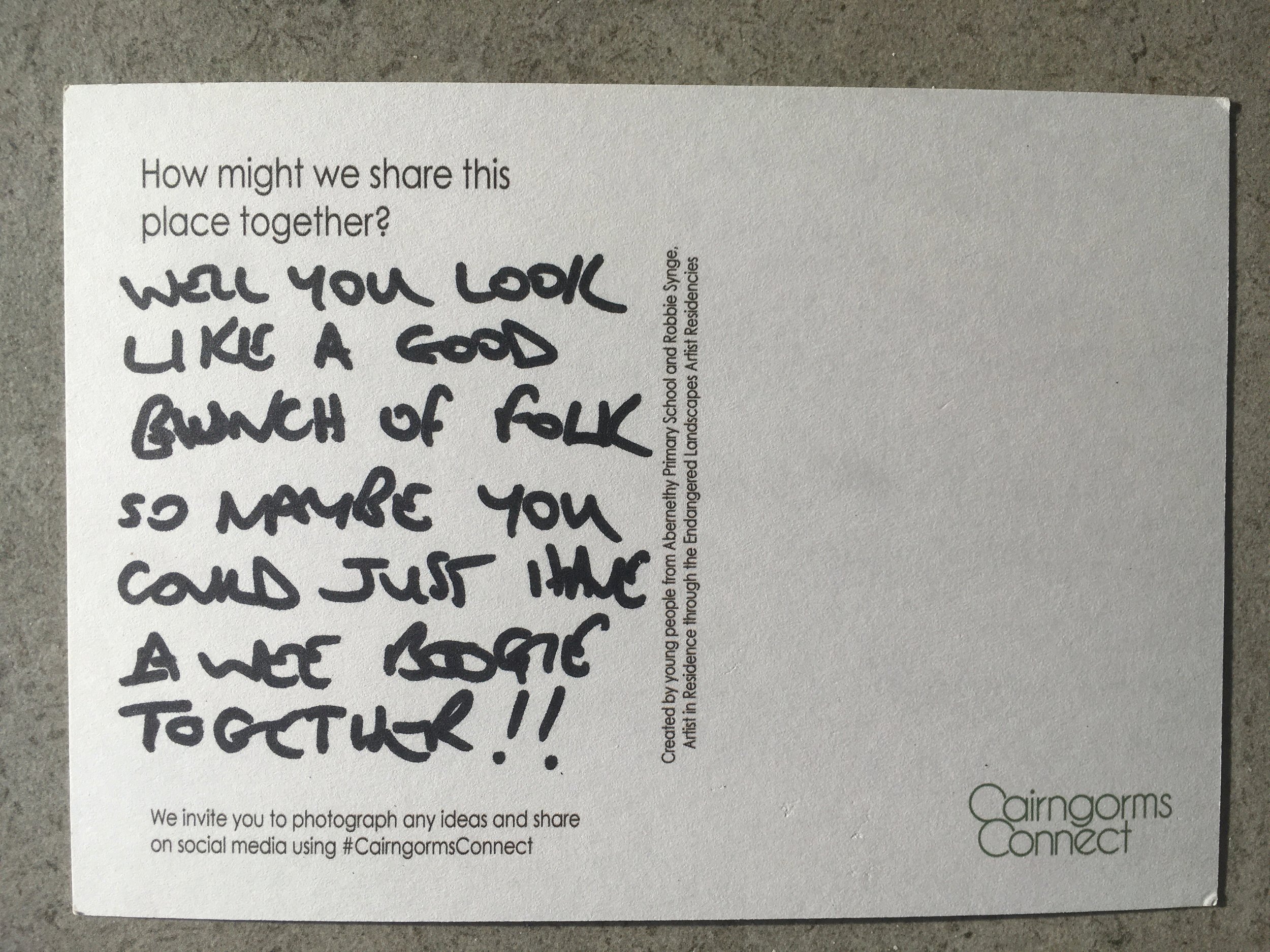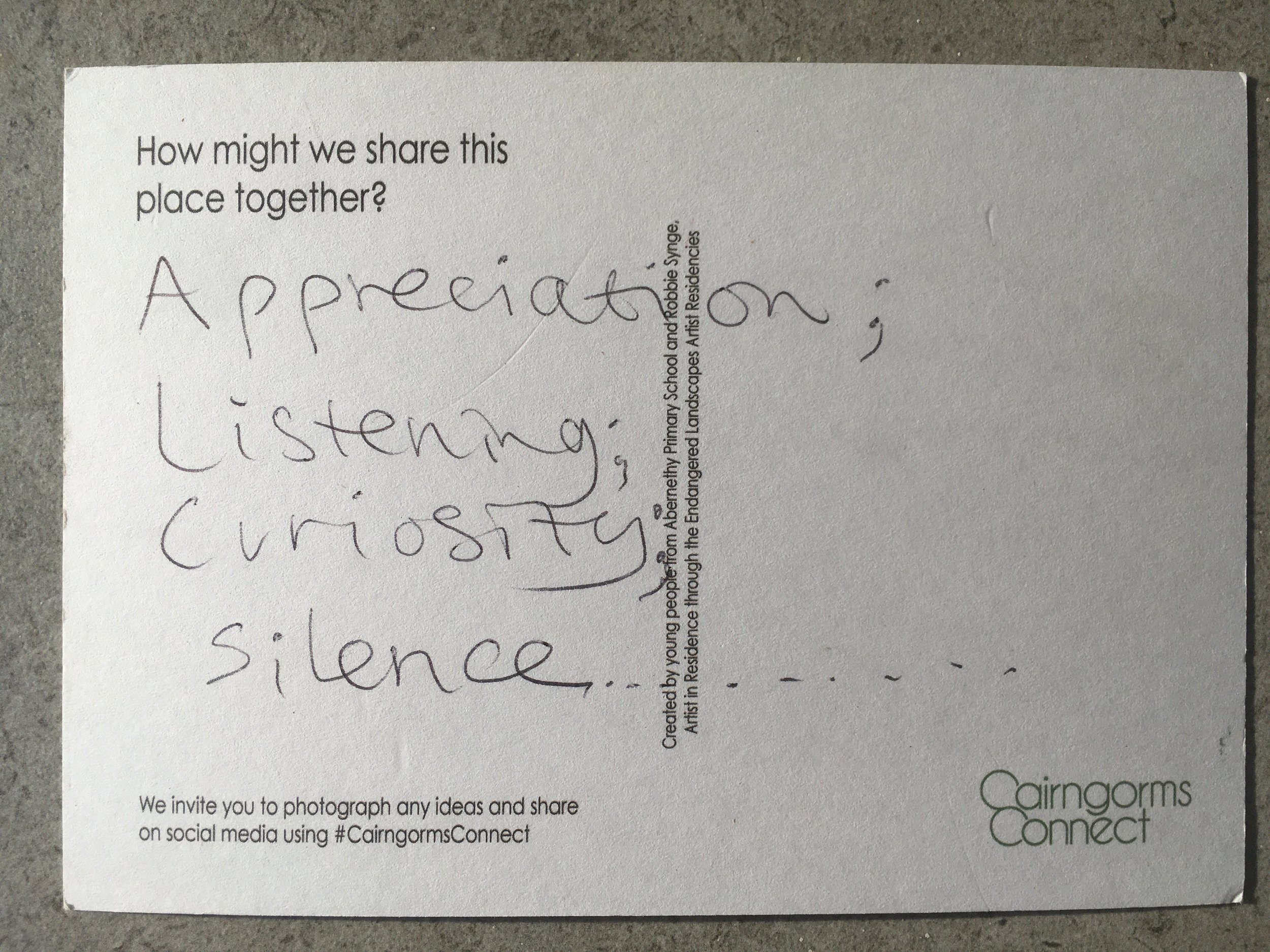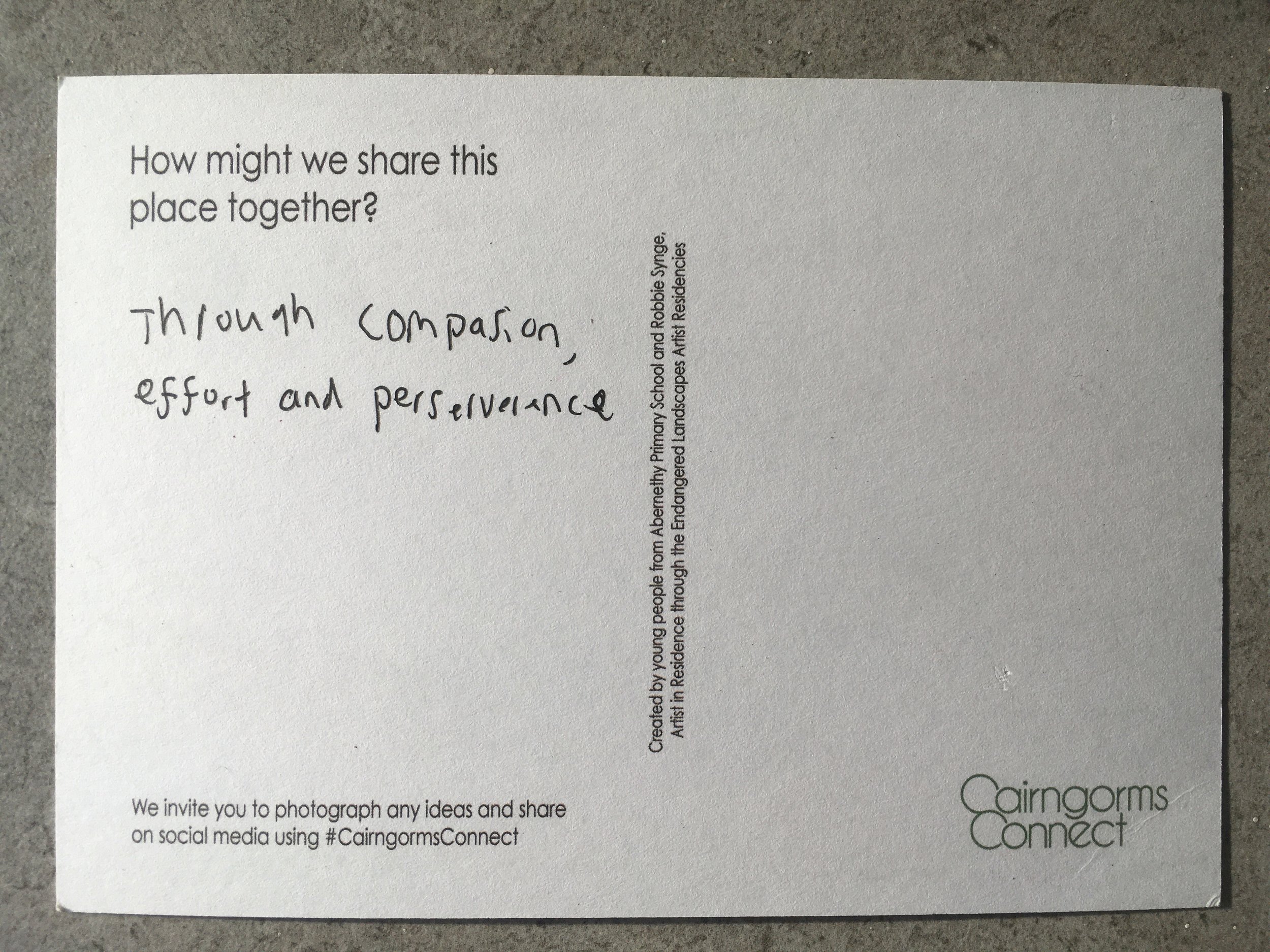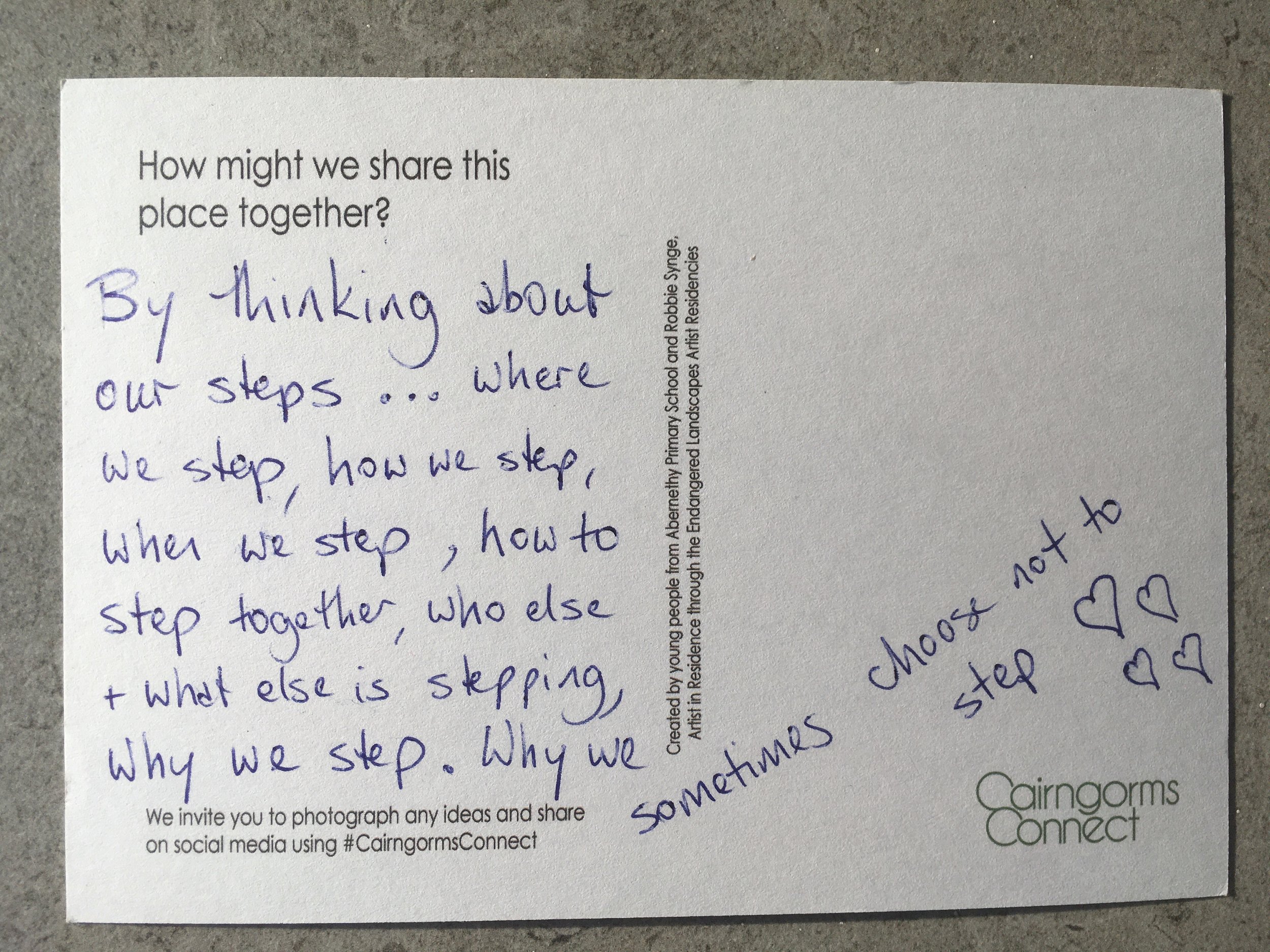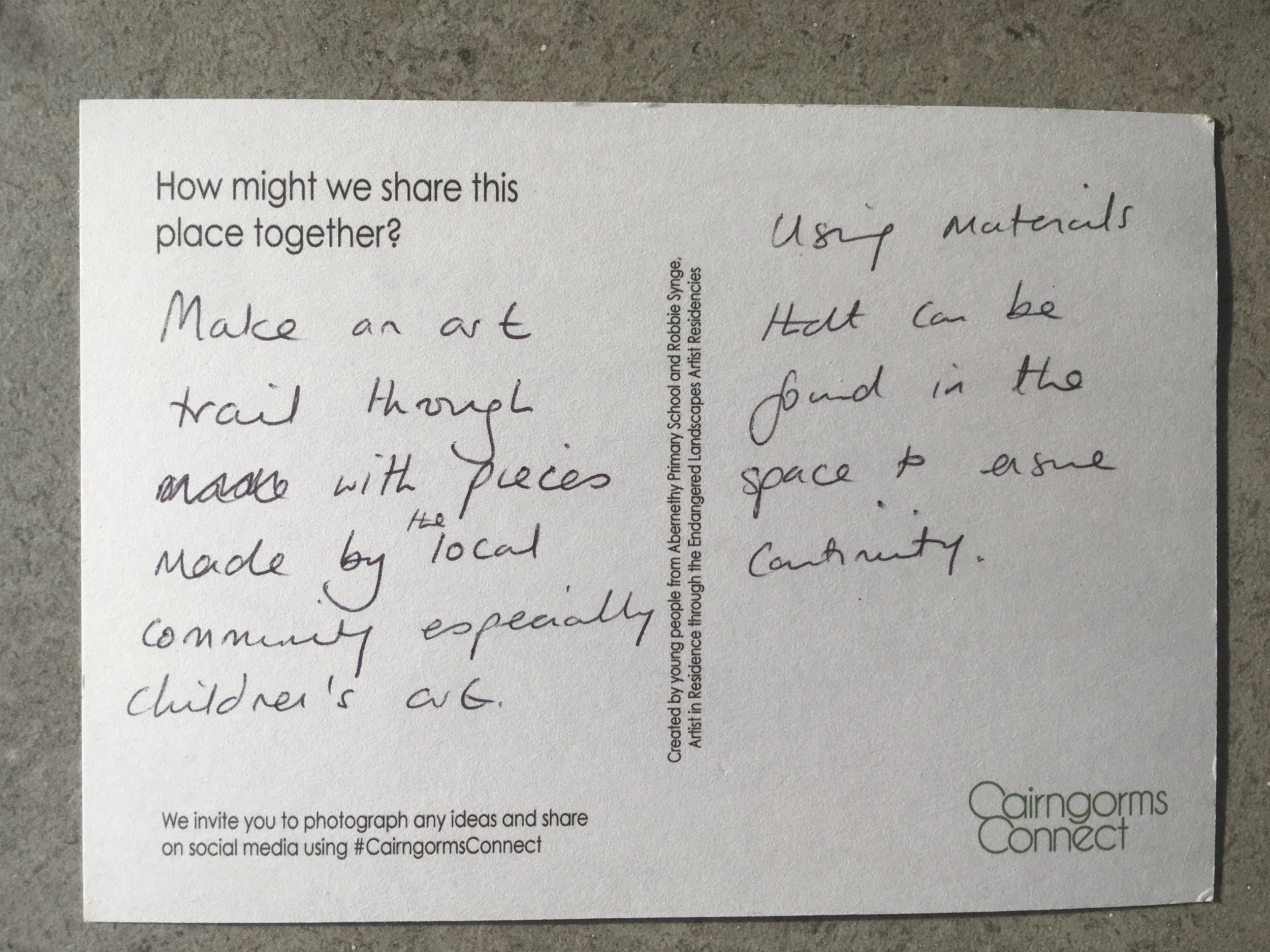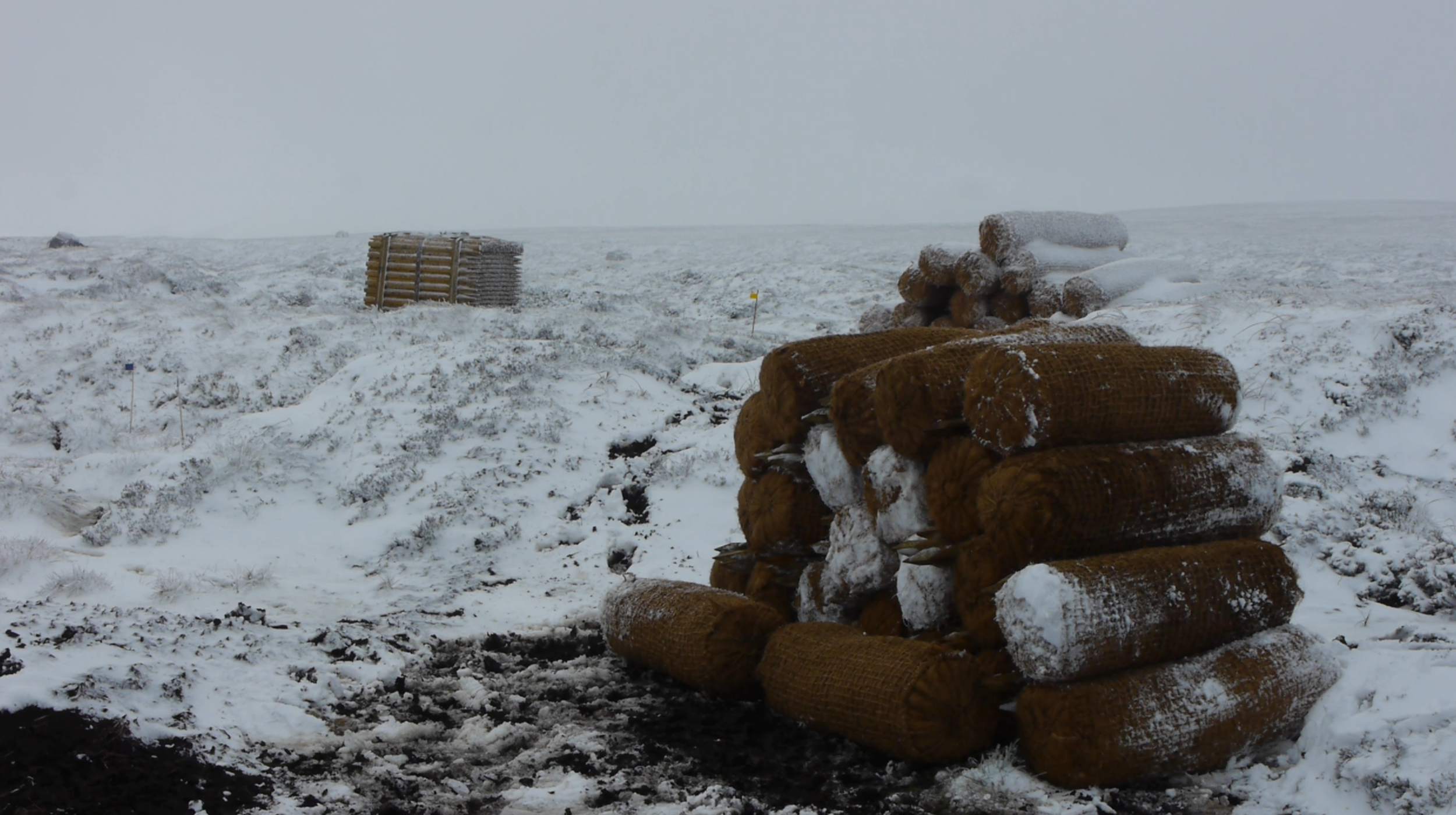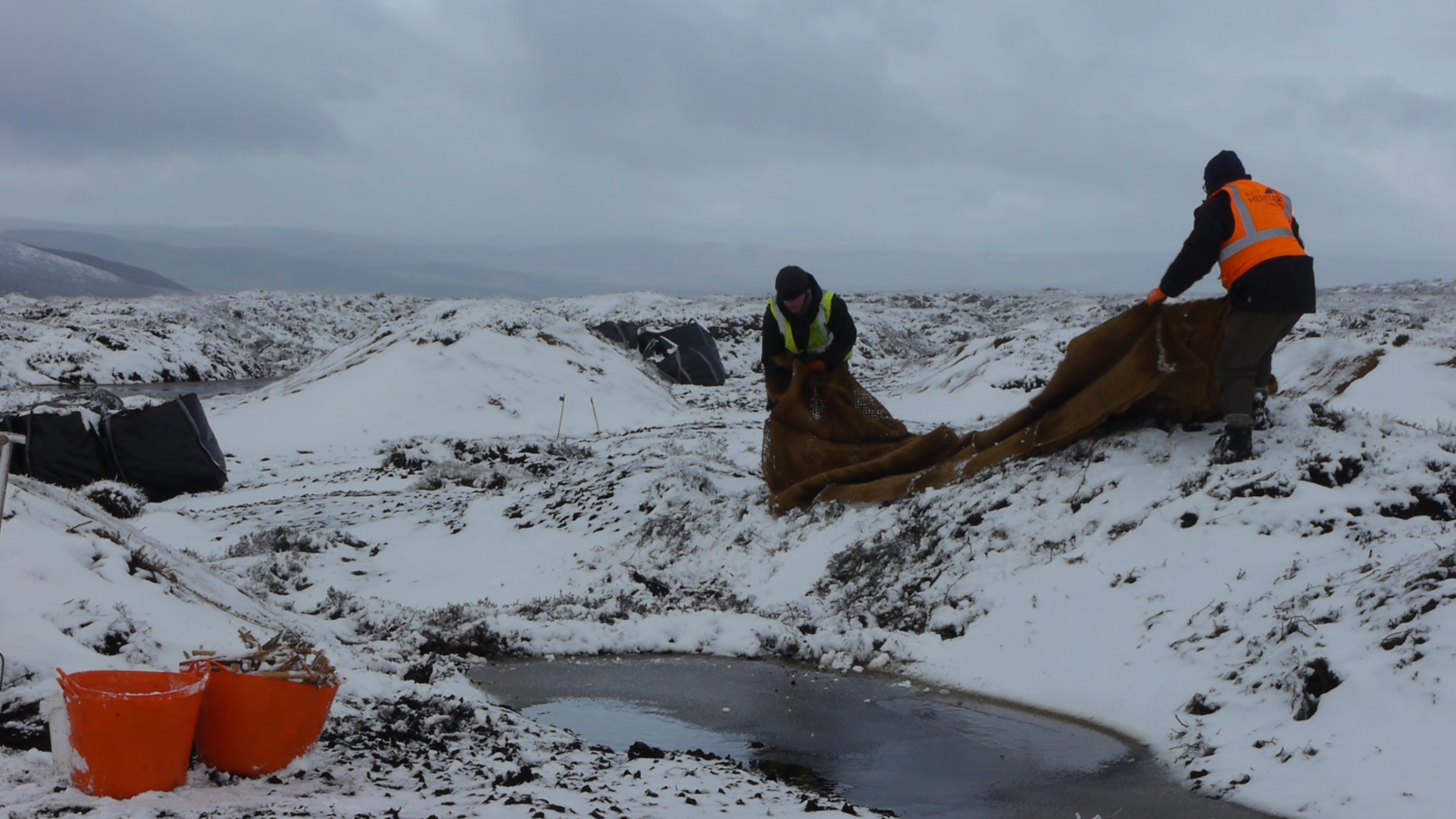Endangered Landscapes and Seascapes Artist Residency with Cairngorms Connect
Selected Work and Documentation
Aug 2021 - Dec 2023
Broad Context
Working as part. of a collective with writer Elizabeth Reeder and visual artist/writer Amanda Thomson and in partnership with Cairngorms Connect, the residency has been highly commended by the judging panel of European projects: Heather Ackroyd (Ackroyd & Harvey), Karen Thomas (Kettle’s Yard) and Tundi Agardi (Marine Conservation).
The residency has involved working playfully and entirely seriously with local communities and conservationists to explore people’s relationship with landscape in the Cairngorms, Scotland.
The breadth of the Cairngorms Connects’s restoration work and its ‘200-year plan’ has prompted a responsive approach, using this opportunity to explore our environment from different perspectives. The focus has been on processes, methods of engagement, of gathering, learning about place, and asking questions around sharing landscape. Various outcomes across forms of image-making, film, writing and performance have arisen out of different points of engagement with people, place and the ‘more than human’, generally.
The residency has presented opportunities to work with Cairngorms Connect partner staff of different specialisms through field-work and conversation, and points of engagement with local individuals and groups of different ages, sometimes with quite non-normative embodied relationship with landscapes. My research has broadly investigated the embodied nature of the place and its inhabitants – people and non-humans – and the nature of their entanglement, considering well-being of human inhabitants as integrated with habitat restoration given historic habitat damage and contemporary socio-ecological intervention potentials.
This residency has been a major context in bringing my work and attention to socio-ecological concerns, re-evaluating previous years of practice investigating the boundaries of human and other bodies - living and objects - and potentials in interaction through performance. The complexity of current challenges, locally and globally, and the need to draw together inter-disciplinary approaches to begin to adequately and build care and attention to place, brings new materialist ideas strongly to focus. What is the potential of imagination - in addition to or in partnership with scientific and conservation knowledge - in helping to engage people more broadly and to help suggest new imaginaries we require? What entanglements of people, place and other species might be created to offer experiential, hypothetical or even fictional possibilities? Exciting possibilities exist in finding new modes of collaborative engagement with place through different forms of participation and artistic output.
Read more about the residency programme here.
“If you were me (a deer), which species would you prefer ate you: wolf, lynx or human?”
- Mara (10), Abernethy Primary School workshop
Nature Creatives
A summer intensive three-day creative workshop for local primary school children at Nethy Bridge Community Centre and in nearby community woodland. These sessions aimed to support young people through a fun and playful creative process, encouraging expression and exploration around our relationship with natural spaces. We considered how we and other species move and encounter the world, drawing on natural history descriptions and images and engaging the senses to create movement sequences and find different ways to make sounds and play with words. this was an investigation into some of the wonderful and diverse movements, sounds and textures of where we live.
Co-led with Lucy Boyes and Jen Kitchen.
Funded with the support of Cairngorms Trust’s Cairngorms Youth Fund.
Photos: Tamin Jones
All of Us
This short film was created with the collaboration of five primary school children through their participation in ‘Nature Creatives’.
Working from a starting point of the perspectives of the non-human inhabitants of local woodland, we observed and discussed the living creatures of the place in parallel to experiments in dance and embodiment. Identifying several locally observed bird species whose names happened to describe their respective movement habits - woodpecker, dipper, treecreeper - we questioned their experience, sensation and concerns and researched language used and attributes associated with them in literature. Movement workshopping and the groups ideas around film techniques and plumage (borrowed costume) were brought together and developed material was filmed.
This was a creative exploration of multi-species embodiment that sought to playfully gain some understanding of these beautiful species’ relationship to place and to generate work that we could share with each other and others in our communities.
Still, Standing (working title)
Initiated in late 2021, this is an always becoming work-in-progress film, being generated by ‘more than human’ participants as these words are being written and read. Its editing choices are being made by deer, badgers, pine marten, hares, moths and others. It is an always becoming weather-world made visible by the forces within. The wind too activates the process of documentation by moving the very tree the camera is tethered to.
With a fundamental interest in movement, observing the motion within landscape whether explicit or more discrete is an immediate point of interest. The conservation worker’s infrared motion-activated camera trap became a tool to work with - appropriate perhaps - to reveal the movements of the place.
And in place, the framing of this arbitrary 16:9 view on this treescape is tight and small in relation to the sometimes overwhelming blurry edged optical perspective we are perhaps more intuitively drawn to. Like a thrown quadrat, another conservationist’s tool, though situated carefully on the table/vertically-oriented plane as opposed to the quadrat’s more randomly selected table/ground plane, it similarly reveals complexity and diversity of overlapping and intersecting species.
This vision of the forest’s complexity was brought about almost accidentally following the pursuit of badger footprints in the snow. These were efforts to discover the range and physical habits of one elusive species and to feel proximity and a sense of its rhythms. As the camera was adopted to verify these rhythms - and indeed it was seen daily up to sometime in 2022 - the camera’s orientation to the tree was initially viewed as a curious landmark. It appears to be an important landmark, a shared waypoint. Its fixedness within the rhythms of others’ movements suggests it offers comfort in some sense. It is paused by, circled around, passed through, hidden behind, rubbed across, bumped into, held onto.
It has been a companion and a waypoint for me also. Repeatedly visited to retrieve its repeat photography as subject and object. Over time, it has become a familiar friend through the functional practice of walking the two miles from home to retrieve memory card footage, feed the camera with fresh batteries and, always on approach, with nervousness around it having fallen. The desire to retrieve movement from the camera but consistent stillness of tree.
This film will most likely need to end sometime, partly due to the needing to put end to the discrete presence of a camera in a publicly accessible place. As the tree’s base is hollow and it leans west, I think more and more with each visit, the momentous re-orientation of the pine from vertical to horizontal may be the appropriate moment to remove the camera, as the pine continues another phase of descending to earth, nourishing life further in its material being. Its material being but not in its life. If we are lucky, perhaps we will witness its dramatic reorientation. Or is that too intimate. I wonder what I should be comfortable with watching when roe deer calf sits quietly beside it in the sun, when pine marten looks alertly around, when hare rests alongside.
What is most interesting is what is not moving, nor alive. But still and dead. An essential part of the forest ecology, the standing deadwood pine is host and witness to a multiplicity of interactions. All in the same place pursuing their intersecting rhythms.
The video below reflects quite randomly selected and tiny moments around the final stages of this vertically-oriented life, literally around, within, through, over, under this tree.
To Earth
In collaboration with Julie Cleves, a performance around a practice of cooperative embodied action making sharing of time and space possible. Performed in gallery spaces presented at Nottingham Contemporary and BALTIC Gateshead in 2022 as part of the Siobhan Davies Studios CONTINUOUS Programme for experimental dance in galleries and museums.
The final phase of creation of this work was completed in and around Abernethy Forest in 2021/22.
To Earth is a collaboration that invites the audience to join Julie Cleves and Robbie Synge as they weave together physical actions, film and simply fabricated wooden objects to reveal a personal story and offer a framework for broader conversation. Spanning over a decade, Julie and Robbie’s practice is shaped by a friendship and adventurous spirit that explores where and how they are able to share time and space together.
Held as a gathering for a small audience, Julie and Robbie perform a journey at a pace determined by the biomechanics of two very different bodies, embodying cooperation to and from the earth.
Read a response to To Earth here: https://corridor8.co.uk/article/to-earth/
Further writing around To Earth will be published in upcoming issue 2 of MOTOR Dance Journal in an article by curator, producer and writer Katy Dammers.
Forest Floor (2019)
Produced before the ELSP Artist Residency but underpinning ongoing research into embodied ways of being, accessing, dissolving dualisms and exploring the philosophy that the body does not end at the skin. Winner of numerous awards internationally, including Kendal Mountain Festival Changemaker Award (2019) and Light Moves Screendance Festival overall award (2022).
Abernethy Primary
Over a period of four months in 2021-22, I led weekly sessions at Abernethy Primary in the school grounds and spilling over into the surrounding forest. The workshops involved somatic technique practices, movement scores devised for and with the young people and general sensory perception within the forest terrain. We developed writing and drawing while in treescapes, thinking about how our bodies do or might mix and connect to the space around us and pursuing and imagining the same kines of enquiry from the imagined perspectives of other species.
Moss Prints
Bryophytes are ancient, rootless plants with peculiar anatomies and genetic and reproduction strategies. In their numerous species, they cover different planes and surfaces of forest architecture. They are hugely important to biodiversity and microhabitats in forests and moorlands and indicative of moisture and closely tied to the health of peatland. They have been used as pillow and bedding material traditionally and they certainly make comfortable resting places, treated gently.
So far, near impossible to document clearly, this image of a full body impression might illustrate the principle.
It is resilient. After, over minutes and hours, individual stems spring back to their original upright. Viewed up close, a choreography of occasional and sudden twitches and flicks of stems can be seen as the moss moves, returning to its overall uniform surface area form like a memory foam mattress, erasing the human trace.
Work is in progress to create time-lapses of these morphing carpets.
Composite Images
Compressing time through layering repeat photography images from infrared motion sensor camera traps. These images reflect reality, albeit snapshots of reality at different times. The approach of creating the mbodiement across multiple bodies and multiple species
The ‘camera trick’ or manipulation of viewers’ potential understandings is playful and perhaps useful in prompting reflection around inter-species relations as they exist or how they might be. They may simply highlight the proximal entanglement of our existence, which our visually-oriented view of landscape tends to miss. When sitting on a boulder or leaning on a fence, might we imagine what else sat there perhaps only hours before and what its thoughts and feelings were?
What of creating narratives; expicit, tenuous or unclear? What about illustrating a point much as a nature documentary does through editing choices? What about a contemporary visual illustration of a spiritual or mythical relation to the more than human world? What about new myth-making? What directions might ensue using this technique and appropriation of the motion sensor camera trap?
The Bothy Project Posters. The Bothy Project commissioned two posters in 2022 following my ‘Neighbourhood Residency’ at Inshriach Bothy in 2021.
Community Consultation
Reflecting my solo investigations into tracking badger and other mammals in snow, I worked with Abernethy Primary in 2022 on a similar project in forest near to the school. We had set about thinking about how we might capture images of deer. Although quite elusive, this initiated a process of with the possible aim of getting into the shot with the deer, into fictional dialogue. Any images captured would be trophies for us, and they were.
Over several sessions at the end of winter, we identified footprints in snow, likely routes of movement, observations we’d made of deer ourselves, and best positions for camera traps. We enjoyed setting the cameras before monitoring them the following week, being repeatedly disappointed before capturing some images. Observing the footage and behaviours of the deer, we shifted to thinking about our interaction: what; why; how; etc. Lots of ideas arose and we created a number of images but felt that an image involving all of us was most fitting. It captured a sense of shared space, being together. “All of Us” encapsulated a more empathetic all-species-encompassing concern.
We decided to use the image printed on a postcard along with a single question as part of an experimental community consultation exercise. It would be introduced to adults in various social events as a way of bridging a gap between generations and species. The question we formed was short and straightforward, yet open and complex. Given its broadness, we discussed briefly that it might prompt wide-ranging response with positive or negative slant but that our question was an open and gentle enquiry.
How might we share this place together?
We were struck by the warmth and gentleness of response. Rather than concrete or specific ideas of things that need to be done, on the whole, it seemed to elicit an overall desire for sense of peace and understanding. Gentle and generous. It was lovely to take these back to the school group and give the pupils a postcard to show to family and friends.
Moth Survey
An overnight camping trip to shadow a moth survey with Cairngorms Connect worker Ellie Dimambro-Denson.
This fieldwork offered learning and insight into specific fieldwork practice around moths and their importance as indicator species in broader habitat monitoring.
This was an immensely memorable event through a period of multi-sensory stimulus in what reflected a unique theatre experience. A beacon of light brought together individuals of diverse and incredible beauty in the middle of spectacular forest with the sound of a generator to power the equipment.
Ellie talked about her previous dance practice and began to move herself, content for these movements also to be captured as indicated in the small clip below. Ellie describes it:
“It was wonderfully freeing and was a joy to connect the more formulaic methods and rhythms of scientific study with something so free, feeling the movements and these species through a different lens, open to possibility.”
The first snow of winter, shadowing peatland restoration high on An Lurg moorland. An inspiring insight into the physical investment of the workers in re-structuring the ground surfaces, coir material from an exotic far away land meeting with granite and heather of this Cairngorms hill. Physical interventions with predicted highly significant long-term benefit.
Mechanisms (Christine Thynne)
Working with long-term collaborator Christine Thynne (80) as creative mentor/consultant in research towards a new performance Mechanisms (working title).
Christine brings together her experience and care of water and woodland with her previous profession of physical therapy and anatomy knowledge. The research playfully investigates how Christine’s physical capacities interplay with structures and architectures natural and built. This project pursues joy by harnessing and embracing the forces and material qualities of landscapes.





